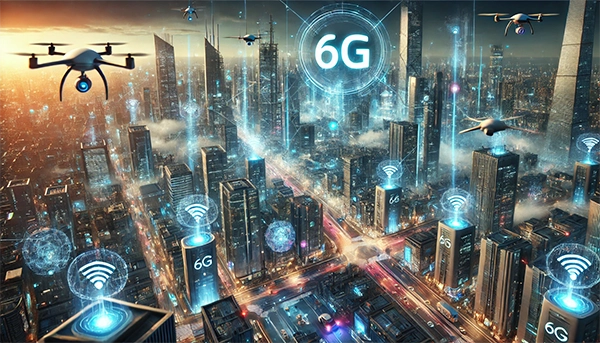The Impact of 6G on the Future of Mobile Communication: What to Expect?

As the world anticipates the next generation of wireless technology, 6G is poised to revolutionise mobile communication in ways beyond what 5G could achieve. Expected to emerge around 2030, 6G will bring ultra-fast speeds, near-zero latency, and unparalleled connectivity. But what exactly does this mean for consumers, businesses, and the broader digital landscape? This article explores the key aspects of 6G, its transformative potential, and the challenges it faces.
Key Advancements in 6G Technology
6G will introduce groundbreaking improvements in data transmission speeds, network efficiency, and overall performance. While 5G currently operates at speeds up to 10 Gbps, 6G is projected to reach up to 1 Tbps, enabling almost instantaneous data transfers.
Another critical aspect of 6G is its ultra-low latency. With response times expected to be below 1 millisecond, applications requiring real-time interactions—such as remote surgery, autonomous driving, and augmented reality—will see unprecedented improvements.
Furthermore, 6G will expand beyond conventional communication networks by integrating artificial intelligence (AI) and machine learning. AI-driven optimisation will ensure more efficient resource allocation, adaptive network configurations, and improved energy consumption.
Enhanced Spectrum Usage and Connectivity
One of the defining features of 6G is its ability to operate at higher frequency bands, potentially extending beyond 100 GHz. These terahertz (THz) frequencies will allow for higher data capacities but will require new infrastructure and signal processing techniques.
With the expansion of 6G, global connectivity will improve significantly. Remote areas with limited access to high-speed internet will benefit from satellite-integrated 6G networks, reducing the digital divide and promoting worldwide inclusivity.
Moreover, 6G will drive advancements in holographic communication, enabling immersive virtual experiences. From business meetings to entertainment, users will interact in ways that closely mimic physical presence.
Potential Applications of 6G in Various Industries
The impact of 6G will extend across multiple sectors, transforming industries through enhanced capabilities and automation. One of the primary beneficiaries will be the healthcare industry, where telemedicine and robotic surgeries will become more precise and reliable.
Another significant application will be in smart cities, where interconnected infrastructure will optimise traffic management, energy consumption, and public safety. Intelligent transportation systems will leverage 6G to facilitate seamless communication between vehicles and road networks.
Additionally, industries such as manufacturing and logistics will experience major efficiency gains through advanced automation and IoT-driven processes. 6G-enabled factories will rely on intelligent systems to streamline production, reduce downtime, and enhance operational safety.
Integration with AI and IoT
Artificial intelligence will play a crucial role in the deployment and management of 6G networks. AI-driven automation will enhance network reliability, predicting and mitigating potential failures before they occur.
The Internet of Things (IoT) will also undergo significant transformation with 6G, as billions of interconnected devices will communicate seamlessly, creating highly responsive and adaptive environments.
These advancements will be particularly evident in sectors such as agriculture, where smart sensors will provide real-time data on soil conditions, crop health, and weather patterns, optimising farming practices.

Challenges and Considerations for 6G Development
Despite its promising potential, 6G faces several challenges before becoming a widespread reality. One of the primary concerns is the infrastructure required to support high-frequency transmissions, which may demand new base station designs and innovative antenna technologies.
Security and privacy will also be critical factors. With the rise of quantum computing, traditional encryption methods may become obsolete, requiring new cybersecurity frameworks to protect sensitive data.
Additionally, regulatory and standardisation processes must keep pace with technological advancements. Governments and international bodies will need to establish global protocols to ensure seamless and secure implementation of 6G networks.
Environmental and Ethical Implications
As 6G expands, concerns regarding energy consumption and sustainability must be addressed. Developing energy-efficient network components and leveraging AI for resource optimisation will be essential in minimising environmental impact.
Ethical considerations will also come into play, particularly regarding data privacy and AI-driven decision-making. Striking a balance between innovation and ethical responsibility will be crucial in shaping the future of mobile communication.
Ultimately, while the road to 6G presents challenges, its potential to revolutionise industries, enhance global connectivity, and drive technological progress is undeniable. The next decade will be instrumental in defining the capabilities and impact of this transformative technology.
